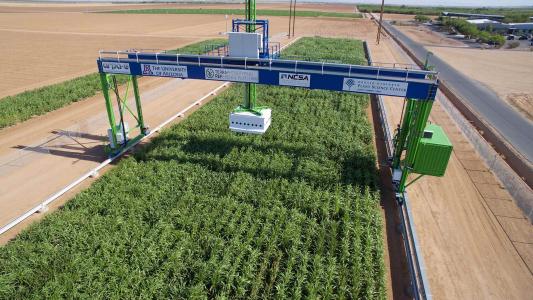It doesn’t take much to know that some foods are spoiled — a single whiff of rotten milk is enough to let you know you should pour it down the drain.
But some spoiled foods are indistinguishable from their fresh counterparts, and the same goes for foods contaminated by bacteria such as E. coli and Salmonella — you won’t know that they aren’t safe to eat until you find yourself battling food poisoning hours after consumption.
There’s also a flip side to this scenario. People will throw out food because its “best by” or “sell by” date has passed, despite the fact that most of this food is still safe to eat. In fact, a full third of the food produced in the U.S. is wasted due to consumers’ confusion over labeling.
“Imagine going to the grocery store and buying three bags of groceries, and as you walk out, you throw one of those bags in the garbage can,” Frank Yiannas, a deputy commissioner at the FDA, told NPR in 2019. “It sounds ridiculous, but in essence that’s what’s happening every day.”
There are sensors that can help detect food contamination or spoilage. However, they usually sit on the surface of the food or on the packaging so they can’t catch any warning signs lurking below.
Now, researchers from MIT have developed a sensor that pierces food and then changes color in the presence of food contamination or spoilage.
Sensing Food Contamination
MIT’s sensor is about the size of a postage stamp and looks like the spiky side of velcro. To create it, the researchers poured a silk protein extracted from moth cocoons into a microneedle mold.
“Silk is completely edible, nontoxic, and can be used as a food ingredient, and it’s mechanically robust enough to penetrate through a large spectrum of tissue types, like meat, peaches, and lettuce,” researcher Benedetto Marelli told MIT News.
The microneedle patch detects food contamination more quickly than other sensors.
The researchers drilled a hole straight up through each microneedle, creating a direct path from the tip of the spike to the back of the patch.
Next, they created two special bioinks: one that changes color in reaction to E. coli and the other to pH levels that would indicate a food spoilage. They printed the E. coli bioink in the shape of the letter “E” on the back of the microneedle patch. The pH bioink was printed as the letter “C.” Both letters were initially colored blue.
Testing the Microneedle Patch
To test their sensor’s ability to catch food contamination, the researchers injected filets of raw fish with either E. coli, Salmonella, or a contaminant-free liquid.
About 16 hours later, the “E” changed from blue to red on the fish containing E. coli, indicating that the bacteria had been correctly identified. The sensor on the Salmonella sample remained blue, meaning it was able to discern between the two bacteria.
After 24 hours, the letters on all of the fish samples changed to red, indicating that they’d spoiled.
This is faster than other sensors designed to detect food contamination and spoilage, according to the researchers. The sensor also has the advantage of being able to monitor food still in packaging — the microneedles can pierce right through it.
Still, the researchers would like to cut down on the amount of time it takes their sensor to sound its warning, so that’s what they’re working on now. They also plan to test the sensor’s ability to catch other bacteria, such as Salmonella, and to work on other types of food, including produce.
Eventually, the sensor could make its way into the hands of food manufacturers — or even members of the public interested in testing questionable food before deciding whether to eat it or toss it in the trash.
We’d love to hear from you! If you have a comment about this article or if you have a tip for a future Freethink story, please email us at [email protected].






